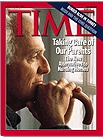OTHER FAMILY PLAYERS:
BEYOND THE
NUCLEAR
CAST
We have thus far focused on the primary family role players in white
middle class families: mother, father, children, siblings, grandparents,
and the step-parents. And yet, there are 105 different familial relationships
for which Hallmark makes cards, like for cousin birthdays Mother-in-Law
Day acknowledgements. Here let's look at the rest of the family cast of
players. Sample issues and topics:
- the anthropological record shows that in many matrilocal societies
where the father moves into the wife's family home that it is her brother
who assumes the disciplinarian role with her children, leaving the husband
to play the "good guy" role
- Consider the uncles in American popular culture, such as Uncle Sylvester
of "The Addams Family" or "Uncle Buck." The professional
literature is peculiarly quiet about the role. Most articles indexed by
Sociological Abstracts deal with incestuous relationships (e.g., uncles
with nieces being more guilty than fathers and brothers)--to the above,
need we add "Uncle Incest"?
- the commonalities between uncles and aunts with grandparents
- Implications of the Italian language not distinguishing "niece"
and "granddaughter" nor "nephew" and "grandson"
- in a 1992 talk, Frank Gifford of "Monday Night Football TV"
fame told a throng of advertising clients that his 2-1/2-year-old son,
Cody, was an "uncle to my five grandchildren."
IMPLICATIONS OF 3 OR MORE
GENERATIONS ALIVE
SIMULTANEOUSLY
Owing to the longevity revolution, there are four, five, and even six
consanguial generations
alive simultaneously. A few years ago the Austin American Statesman
included the story of those awaiting Meghan Anne Ryan's entry into the
world. She was greeted by two grandmothers, four great-grandmothers, a
great-grandfather, a great-great-grandmother, and a
great-great-great-grandmother.
The longevity revolution will have increasing impacts upon family
systems. Among the challenges posed:
- Changes in spousal relationships in old age. The transition from
full-time jobs to retirement is one of life's most difficult, featuring
the anxieties of losing a regular routine, geographic moves, smaller income,
fading health, and the increased time with one's spouse (with the possible
discovery of no longer having much in common).

- Changing relationships with children, possibly including a flip-flop
in dependencies. A mid-1980s report from the Subcommittee on Human Services
of the U.S. House of Representatives Select Committee on Aging noted: "Today,
the average woman will spend 17 years of her life caring for a dependent
child and 18 years helping a dependent parent."
- Care for aged parents is further complicated by the geographic mobility
of family members (click here to see Census study of geographic moves of Americans 1995-
96), leading to long distance caretaking and the growth of
surrogate child industries.
- Generational conflicts over such matters as childrearing.
- Answers: The
Magazine for Children of Aging Parents
- Eldercare
GRANDPARENTS
AND THE GREATS
Tamara Hareven observed that "the opportunity for a meaningful
period of overlap in the lives of grandparents and grandchildren is a 20th
century phenomenon" (1977:62). According to Dr. Arnold Kornhaber,
co-author of Grandparents-Grandchildren: The Vital Connection, the
grandparent-grandchild bond is second only in emotional importance to the
bond between parents and children. Approximately 70 percent of older Americans
are grandparents.
According to an AARP
survey released in late 1999 (for pdf copy of complete report click
here), 31% of adults are grandparents. One of nine grandparents is a caregiver for a grandchild. Of
those not living with their grandkids, almost 7 in 10 see a grandchild at least
monthly-- 44% see one at least once a week.
Among the questions asked in the 1990 NORC General
Social Surveys was the following series of questions:
Many adults play roles in the lives of children. Please rate the
following as very good (scored 1), good (2), fairly good (3), fairly bad
(4), or very bad (5): mothers (mean score=1.59), fathers (1.84), grandparents
(1.72), clergy (2.07), teachers (2.24), child-care providers (2.52).
The superior score given to grandparents as opposed to fathers is
interesting. Below are the mean scores given to various family members
by permutations of sex and race:
|
ROLE MA |
ROLE PA |
ROLE GPARS |
| WHITE MALES |
1.58 |
1.81 |
1.77 |
| BLACK MALES |
1.50 |
1.77 |
1.49 |
| WHITE FEMALES |
1.62 |
1.84 |
1.72 |
| BLACK FEMALES |
1.54 |
2.00 |
1.57 |
- National Aging Information Center's "Grandparents Raising
Grandchildren" page
- Demographic characteristics of grandparents and grandchildren from the U.S. Census
- Family
Relations from Penn State: Grandparents, brothers and sisters
- Third Age's
Grandparenting: The Essential Sites

- Joyce Post
(Administration on Aging), family relationships and grandparenting sites
- Grandparent
Caregivers: A National Guide (legal resources)
- Comparison of Grandparent
Visitation Statutes Nationwide (from AARP)
- Grandparents
Homepage
- Foundation for
Grandparenting (Santa Fe, NM), including page on stepgrandparenting
GODPARENTS AND SURROGATE KIN
- "The
Godparent: A Job Description" from the Anglican church

 Return to Family Index
Return to Family Index


![]()